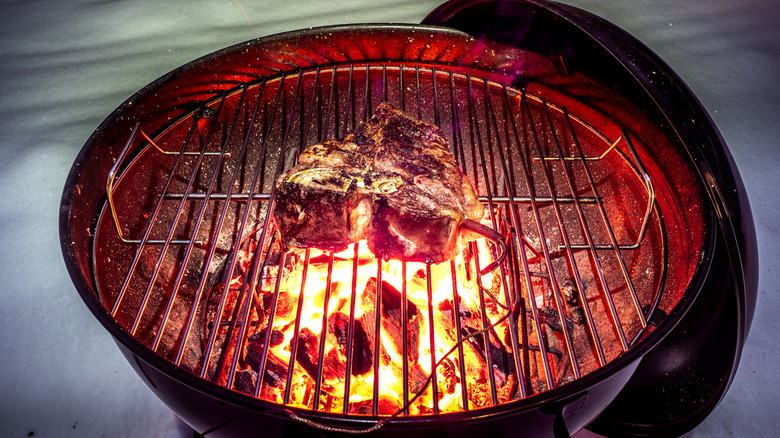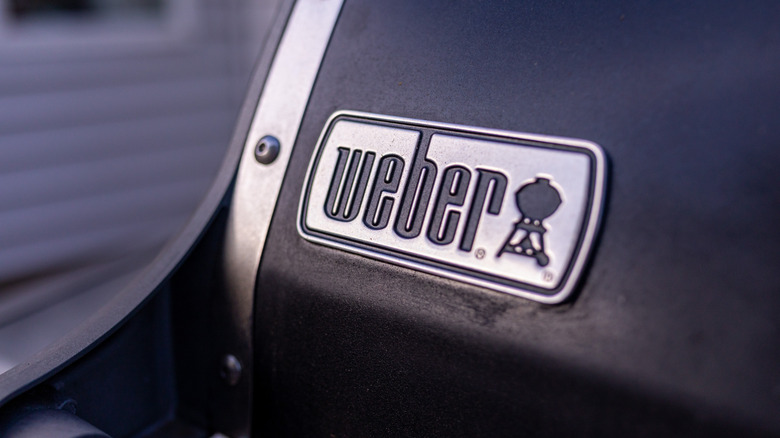How Buoys Inspired The Creation Of Weber Grills
Although barbeques have passed us by for colder weather and indoor cooking, grilling still remains a popular option for some no matter what the weather. For certain grilling fans, they'll tell you that nothing beats a Weber grill, even if it's on the hottest of summer days or the coldest winter flurries. While you may argue that other brands may excel far above Weber, you can't deny that its grills certainly are recognizable.
Weber has left its own unique footprint in the world of grilling, boasting that it revolutionizes the way people grill. One of its more modern innovations, for example, is the Weber Connect Smart Grilling Hub, a smart thermometer that measures not only the internal temperature of your meat but also provides cooking advice and even Alexa-based support (via TechCrunch).
But perhaps what Weber is most recognizable for are its classic charcoal grills, first introduced back in the 1950s, according to Weber. With an enclosed, capsule-like design, Weber grills stand out from the boxy, rectangular grills that line so many backyard patios and porches across America.
But have you ever wondered why Weber's grills come in that shape? Is it because there's some sort of architectural secret involved in making the grill rounder and streamlined, or is it just a unique design choice to set it apart in the market? Maybe both of these answers are equally true, considering that the inspiration for Weber's unique design choice is tied back to an unexpected maritime source (via Taste of Home).
The origin of Weber's buoy shape
To say that Weber invented the backyard grill wouldn't be true. Popular Mechanics explains that the first outdoor grills used in home grilling came around in 1897, with the Kingsford Products Company being given credit for popularizing the charcoal briquette. Going into the 1940s and 1950s following the suburban housing boom, backyard grilling had begun to take off in popularity.
But these early backyard grills weren't without their flaws. The cooking process was unreliable, leading to burnt or undercooked meats. Heavy winds could stir up the ash at the bottom of the grill or ruin parties with smoke. According to Smithsonian Magazine, metalworker and grilling enthusiast George Stephen, Sr. became annoyed by the unreliable backyard grill and set out to create a more efficient model. At the time, Stephen's place of work, the Weber Brothers Metal Works, was fulfilling a contract to make metal buoys and Stephen took two half-shells of the buoys home to experiment with. After a bit of testing and feedback from neighbors, Stephen created the first Weber grill — enclosed, dome-shaped, and designed for the grilling enthusiast.
The buoy-shaped design of the grill not only allowed for more efficient temperature control and prevented smoke from spreading, but also allowed customers to quickly snuff out burning coals to prevent flare-ups. Although the design and make of the grill changed slightly over the years, the grill's iconic shape still remains a recognizable feature in the world of backyard barbecues.

